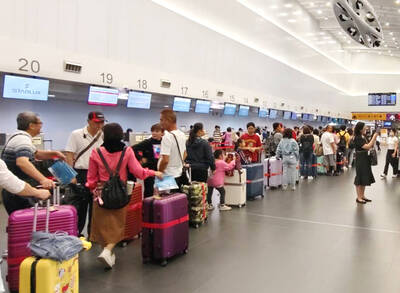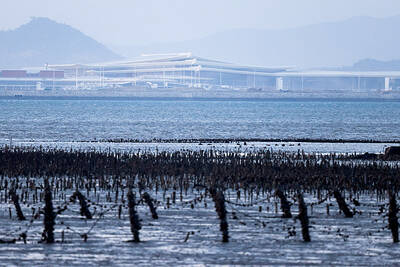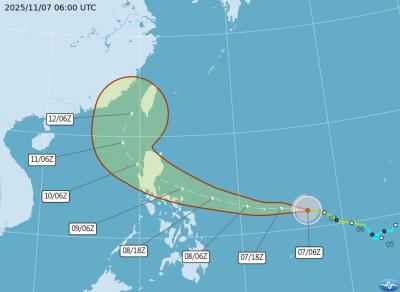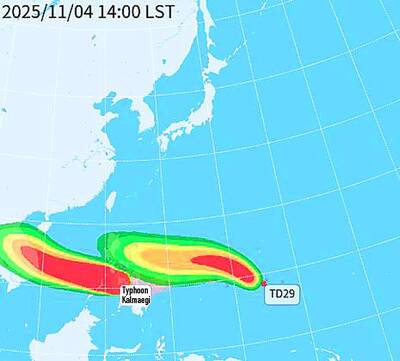As a result of increased costs, half of the nation’s long-distance fishing boats are now inactive and many fishermen have said that with no peak in oil prices in sight, they were preparing for the worst-case scenario, which would be the cessation of operations altogether.
Fuel contributes to more than half of a fishing boat’s operational cost, Taiwan Tuna Association chairman Huang Chao-ching (黃昭欽) said, adding that a 600 tonne boat consumes more than NT$73,000 in gasoline per day — more than payments on ship, bait and employee compensation combined.
At such rates, it is cheaper for owners to leave their ships in port than pay the NT$2 million-plus (US$66,000) they would spend on fuel for each trip, which typically runs for 20 to 30 days, Huang said.
In recent days, the nation’s major seaports have been crammed with long-journey fishing boats returned from the Pacific Ocean. Estimates made by Long-shun Fishing Company president Wang Shun-long (王順隆) showed that half of the nation’s long-distance fleet was now idle.
Rising oil prices and increasingly strict international fishing restrictions have meant that the nation’s fishing industry faces a serious risk of total fadeout, Wang said.
Pingtung County’s Liouciou Township (琉球) fishing association chief Tsai Pao-shing (蔡寶興) said that diesel prices had risen from NT$3,552 to NT$4,247 per 200 liters, which added more than NT$200,000 to every trip.
Penghu County had as many as 3,600 fishing ships in its prime, but now it has less than 2,200 ships and many have been put up for sale. Ilan County’s Nanfangao (南方澳) port, has experienced a similar decline, from 1,400 ships to less than 1,000.
Although the government introduced a fishing suspension subsidy six years ago, few fishermen had applied for the grant until about two years ago. Ships that sail for more than 90 days and dock for more than 120 days qualify for the subsidy.
Despite the annual subsidy of NT$13,000 to NT$100,000 per ship, many have opted to suspend their activities.
The agency said it expected 8,000 ships to stay in port this year.

Three Taiwanese airlines have prohibited passengers from packing Bluetooth earbuds and their charger cases in checked luggage. EVA Air and Uni Air said that Bluetooth earbuds and charger cases are categorized as portable electronic devices, which should be switched off if they are placed in checked luggage based on international aviation safety regulations. They must not be in standby or sleep mode. However, as charging would continue when earbuds are placed in the charger cases, which would contravene international aviation regulations, their cases must be carried as hand luggage, they said. Tigerair Taiwan said that earbud charger cases are equipped

UNILATERAL MOVES: Officials have raised concerns that Beijing could try to exert economic control over Kinmen in a key development plan next year The Civil Aviation Administration (CAA) yesterday said that China has so far failed to provide any information about a new airport expected to open next year that is less than 10km from a Taiwanese airport, raising flight safety concerns. Xiamen Xiangan International Airport is only about 3km at its closest point from the islands in Kinmen County — the scene of on-off fighting during the Cold War — and construction work can be seen and heard clearly from the Taiwan side. In a written statement sent to Reuters, the CAA said that airports close to each other need detailed advanced

Tropical Storm Fung-Wong would likely strengthen into a typhoon later today as it continues moving westward across the Pacific before heading in Taiwan’s direction next week, the Central Weather Administration (CWA) said. As of 8am, Fung-Wong was about 2,190km east-southeast of Cape Oluanpi (鵝鑾鼻), Taiwan’s southernmost point, moving westward at 25kph and possibly accelerating to 31kph, CWA data showed. The tropical storm is currently over waters east of the Philippines and still far from Taiwan, CWA forecaster Tseng Chao-cheng (曾昭誠) said, adding that it could likely strengthen into a typhoon later in the day. It is forecast to reach the South China Sea

WEATHER Typhoon forming: CWA A tropical depression is expected to form into a typhoon as early as today, the Central Weather Administration (CWA) said yesterday, adding that the storm’s path remains uncertain. Before the weekend, it would move toward the Philippines, the agency said. Some time around Monday next week, it might reach a turning point, either veering north toward waters east of Taiwan or continuing westward across the Philippines, the CWA said. Meanwhile, the eye of Typhoon Kalmaegi was 1,310km south-southeast of Oluanpi (鵝鑾鼻), Taiwan’s southernmost point, as of 2am yesterday, it said. The storm is forecast to move through central